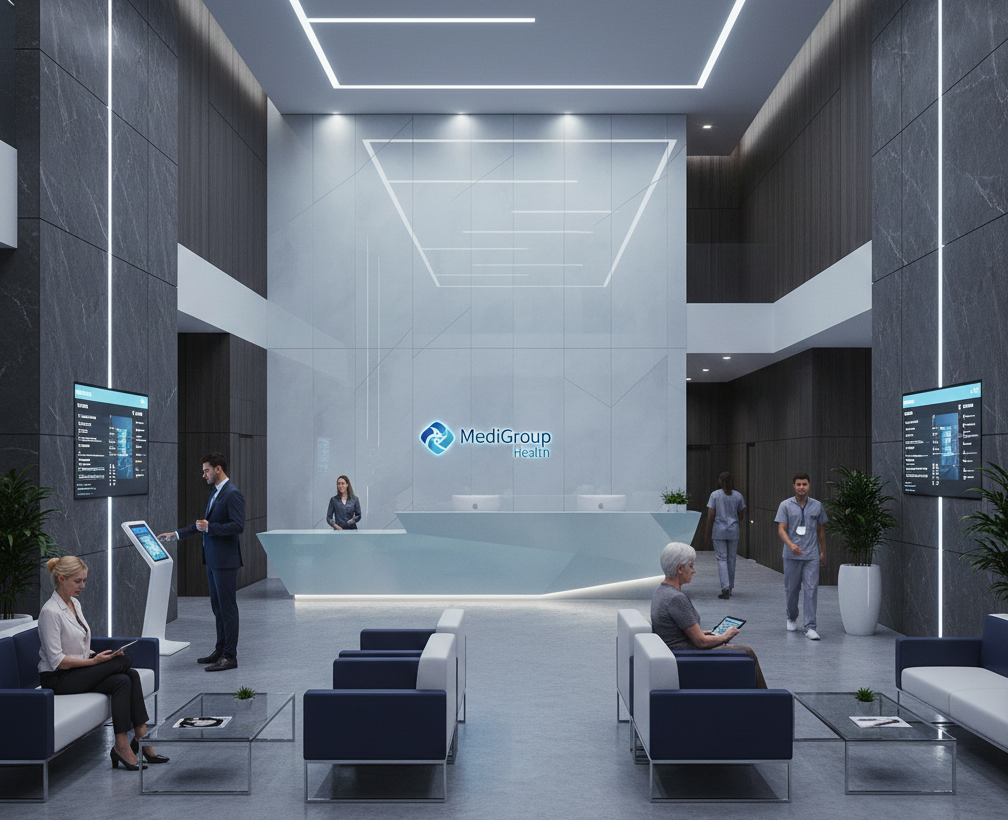As a leader, your day is a strategic chess match. You’re focused on market share, talent retention, operational efficiency, and the bottom line. The last thing you have time to worry about is whether the conference room uses an HDMI or a USB-C cable.
And yet, how many times has a high-stakes meeting been derailed by technology?
A pixelated video feed during a crucial client pitch. The awkward five minutes of silence while someone struggles to share their screen. The remote team member who can’t be heard, effectively silencing a valuable voice.
These aren’t just minor “tech glitches.” They are business problems. They erode productivity, project a poor brand image, and create friction in a world that demands seamless collaboration.
The conversation around Audio-Visual (AV) technology is often bogged down in resolutions, codecs, and acronyms. But for a C-level executive, the conversation needs to be different. It’s not about the hardware; it’s about the outcomes. This guide is for you—the leader who doesn’t need to know how the engine works, but absolutely needs the car to win the race.
The Shift: From Hardware to Business Outcomes
Old View of AV: Tools in Isolation
Traditionally, AV used to refer to specific tools like a boardroom video conferencing system, a sound system in an auditorium, or a projector in a conference room. Many times, these configurations were seen as “nice to have” rather than as strategic investments.
New View of AV: Integrated Business Enabler
Today, AV is a fundamental component of the overall corporate plan. Hybrid work, worldwide teams, and customer-facing digital experiences all depend on AV integration to guarantee communication and cooperation flow without friction. Leaders currently consider AV to be a major influence on company outcomes, including:
- Faster decision-making with seamless collaboration tools.
- Improved employee engagement through inclusive hybrid meetings.
- Enhanced brand presence in client interactions and events.
- Scalable operations as teams expand across geographies.
For non-technical leaders, the message is simple: AV is less about equipment, more about experience.
What C-Level Leaders Should Ask (Instead of Tech Specs)
You don’t need to know the difference between HDMI and DisplayPort. What you should ask are business outcome questions:
- Will this AV solution improve collaboration across offices and time zones?
- Does it provide a consistent user experience for all employees, regardless of location?
- How will it support hybrid meetings where some participants are in the room and others remote?
- Can it scale as we open new offices or expand globally?
- Does it align with our broader digital transformation goals?
These questions focus on the “why” and “how” of AV adoption, ensuring your investments deliver tangible organizational value.
Key Areas of AV That Matter to Leaders
1. Hybrid Meeting Experiences
Hybrid work has changed meeting dynamics. Bad AV can cause remote workers to feel like second-class citizens. Modern AV guarantees fairness of experience, whereby everyone, whether they are in the room or calling in, feels equally heard and seen.
- Smart cameras that track speakers for natural engagement.
- High-quality audio systems ensure clear communication.
- Integration with platforms like Microsoft Teams, Zoom, or Google Meet.
For executives, the takeaway is clear: good AV minimizes meeting fatigue and boosts inclusivity.
2. Scalability and Flexibility
As organizations grow, opening new offices or collaborating with international partners, AV solutions must scale.
- Cloud-based AV systems allow centralized management and easy expansion.
- Standardized AV setups across offices reduce learning curves for employees.
Leaders should prioritize solutions that adapt as their business evolves, rather than systems that require costly overhauls.
3. Employee Experience and Culture
AV has a direct impact on how workers perceive the world around them. The team’s experience with too old or broken systems can be frustrating and can take employees away from their work. Up-to-date and user-friendly AV encourages flexibility, creativity, and productivity.
AV should be thought of as part of a culture strategy for the workplace and the way in which you empower teams to connect and share ideas, and feel included.
4. Client and Partner Impressions
Your AV system is both outside and inside. Whether you hold worldwide town halls, investor briefings, or virtual client meetings, your AV’s quality determines the strength of your brand.
- High-definition video and clear audio communicate professionalism.
- Digital signage and immersive presentation tools create lasting impressions.
For the C-suite, AV is a brand amplifier.
5. Security and Reliability
Additionally, C-level leaders want confirmation that AV systems are dependable and secure. Badly set systems might reveal operational downtime or security flaws for companies.
Questions to ask:
- Does the AV system meet enterprise security standards?
- How often are updates and patches provided?
- Is there redundancy in case of system failure?
A reliable AV system isn’t just about convenience—it’s about protecting business continuity.
Common Misconceptions Leaders Have About AV
- “AV is only an IT concern.” – In reality, AV impacts culture, collaboration, and business reputation—making it a leadership concern.
- “Upgrading AV is too expensive.” – Modern solutions offer scalable models—invest once, and expand as needed.
- “Employees will figure it out.” – Without intuitive, standardized systems, employees waste time troubleshooting instead of focusing on real work.
- “We only need AV in big boardrooms.” – Hybrid work means every space—small huddle rooms, home offices, global branches—needs AV equity.
- “Cloud tools alone are enough for hybrid collaboration.” – While Zoom, Teams, and Meet are essential, without quality cameras, microphones, and displays, the experience breaks down. Hardware and software must work hand-in-hand.
Actionable Steps for C-Level Leaders
- Define business outcomes first. Don’t start with tech specs—start with goals.
- Engage AV experts early. Bring in solution providers who understand enterprise challenges.
- Standardize experiences. Ensure a consistent, easy-to-use system across all locations.
- Measure impact. Track adoption rates, meeting efficiency, and employee feedback.
- Plan for scalability. Choose systems that grow with your business.
Conclusion
Originally a support role, AV has developed into a strategic facilitator of modern business. For non-technical leaders, ensuring AV investments produce significant results—agility, teamwork, staff involvement, and brand impact—takes precedence above knowing every bit of equipment.
At Resurgent, we help organizations stay ahead with corporate AV solutions built for a hybrid, global future. Audio-video integration no longer applies only to communication capabilities within a single space; instead, our AV solutions are designed to transcend spaces and connect people across multiple locations and devices, empowering teams as they aim toward achieving their company goals.
Contact Resurgent today to discover how our AV solutions can future-proof your organization’s collaboration strategy.
FAQs
1. What’s the main takeaway for leaders on AV?
Leaders should focus on business outcomes like improved collaboration and employee engagement rather than technical specifications like cables or codecs.
2. How has the view of AV changed in business?
AV has shifted from a “nice-to-have” collection of isolated tools to a strategic, integrated business enabler that supports hybrid work and global teams.
3. How can my business get started with the right AV solution?
You can contact Resurgent to discuss how our AV solutions can help your organization’s collaboration strategy.



